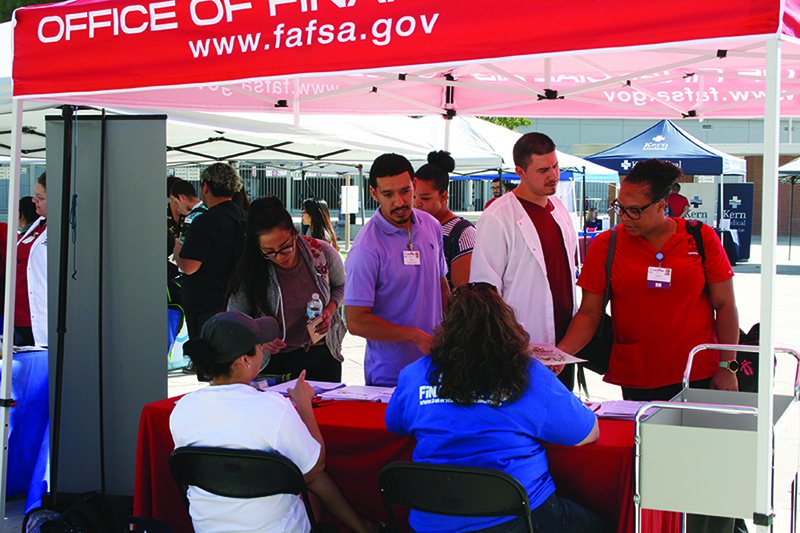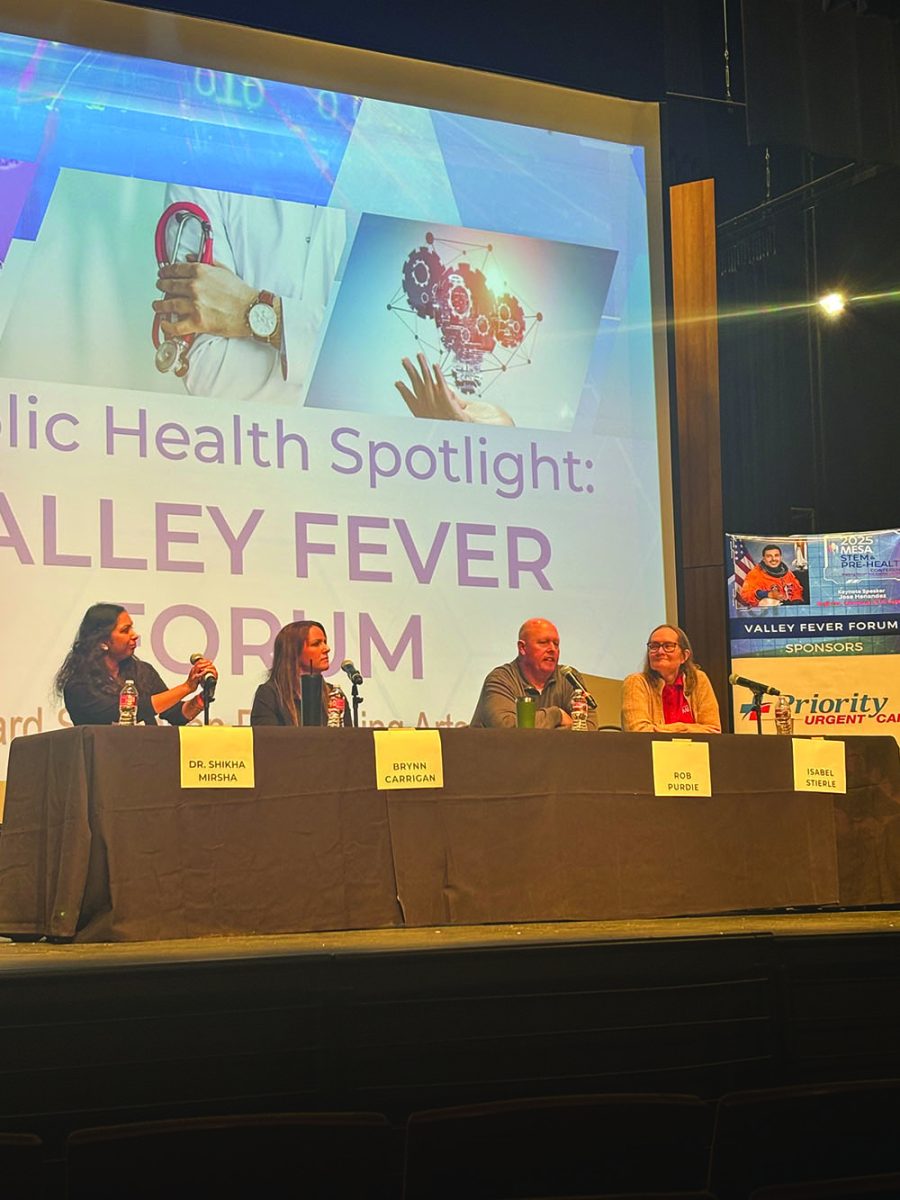The Office of Financial Aid holds a booth at the Health Connections Fair for scholarships
Bakersfield College radiology students talk to financial aid reps at a Office of Financial Aid booth on campus during the Health Connections Fair held on Oct. 5.
November 1, 2017
A group of radiology students, gathered at the Office of Financial Aid booth on campus, during the Health Connections Fair on Oct. 5, to discuss financial aid and scholarships.
Some students were asked questions by financial aid office representatives about whether they had applied for scholarships. One student said that he was “too lazy” to apply.
Whether students feel intimidated by the scholarship process, or feel it’s too complicated, find themselves too busy, or are apathetic about it, the fact remains that there are many scholarships going unrewarded to deserving students.
The Bakersfield College scholarship process is in fact simple enough that taking a few minutes to go to its website could be a valuable tool towards next year’s college expenses. Not applying for scholarships comes at a financial loss to the student, which only comes around once a year from Oct. 1 to Dec. 1.
According to Tom Gelder, the Executive Director of the Bakersfield College Foundation, the reason many students might not apply for scholarships is because they are unaware of these scholarships, they do not want to be troubled with having to apply for them, or they might assume they do not qualify.
Elizabeth Nolin, 33, who is a radiology technologist student, said that she has never applied for scholarships. She pointed out that “lack of time,” and “just procrastinating,” are the two reasons she has not applied.
Nolin was under the impression that she would have to go into the financial aid office to research the scholarships that were available to her, however upon learning that she could research this online, she said that she would go online to fill out the application and was excited about the possibility of free educational money for next semester.
Francis Hernandez, 28, another radiology technologist, who will be graduating in May, applied for scholarships last year. She said that the process for applying for scholarships was “very easy.” She had said she had learned about the scholarship benefits from one of her professors and she ended up qualifying.
The Bakersfield College foundation is instrumental in providing these students scholarship opportunities. They work directly with donors to pinpoint what type of scholarship the donors would like to create for BC students.
Donors set the parameters of the scholarship, such as income-based needs and GPA requirements. Sometimes, the donor requires very minimal requirements of the student in order to be awarded the scholarship. Once the student submits an application, the Bakersfield College Foundation may serve as the selection committee. When the applicant meets all of the criteria, the committee then chooses what applicants to award the scholarship to. Sometimes it is the donor who chooses the recipient of their scholarship.
The foundation adds scholarships continually to its program, as donors contact them with a desire to help BC students. Gelder pointed to some of the scholarship opportunities available.
He said that the Levans established The Kern Promise program that allows those who enroll as full-time students, who have an incoming cumulative grade of 2.6, and have an education plan in place, can receive up to $2,000 a year for the two years if a student is “in the Promise.”
There are even unique scholarships, such as “Radar the Wonder Dog Memorial,” awarded for students majoring in Animal Science.
Some scholarships pertain to female students pursing an Art degree.
The Donna Litherland Memorial Scholarship is a $1,000 scholarship which is awarded to a full-time Art Program or Humanities student.
There are also scholarships for students who are first generation students, where neither parent has attended college.
The First-Generation Scholarship of $500 is awarded to students who transfer to a four-year institution, have at least a 2.5 GPA, and have a high financial need.
One student who was a nursing major received a $7,000 scholarship, according to Gelder, who said there are quite a few “sizeable scholarships” being offered.
Understanding the nature of the scholarship process and the availability of money that awaits students, might help dispel myths students have about scholarships.
Gelder said that they have an “auto-match” system in the Academic Works program – an online database that shows a brief description of the scholarship and its donor information. Once a student goes to the financial aid website, and accesses this program they will be prompted to fill out the general questionnaire.
A very compelling feature of the software system that makes finding scholarships a lot simpler, according to Gelder, is the ability to put in keywords to search for scholarships that might apply to a student’s degree path.
For example, “nursing has 15 scholarships, with one scholarship giving out $3,000 to the student,” said Gelder.
Dec. 1 is the deadline for the scholarship application submission. Students are required to fill out a FASFA application but do not necessarily need to be FASFA eligible to receive a scholarship.
For a list of available scholarships or for more information on how to recieve financial aid go to www.kccd.academicworks.com.






